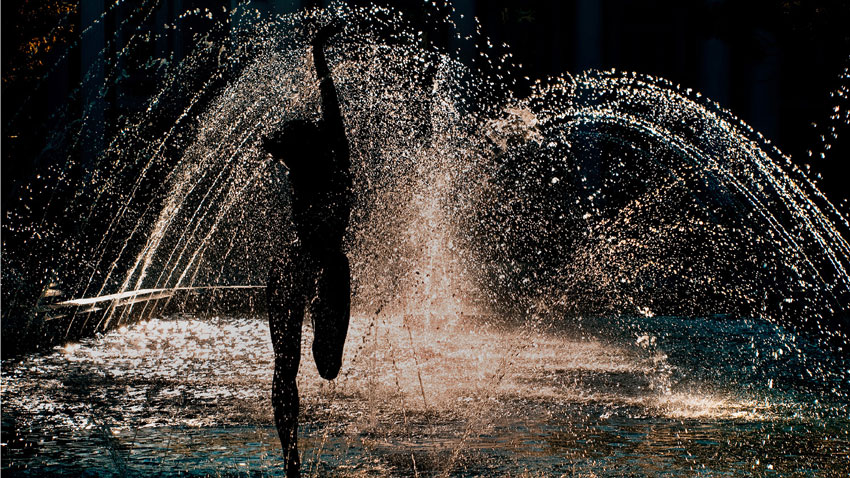 3
3
Fountains in any city attract people like a magnet. Anyone endowed with a sense of beauty can hear the fascinating stories the murmur of their waters have to tell. A photo exhibition was organized by the Bulgarian Water Association and the I Love Water Association called “The Fountains of Bulgaria”.
How did the idea of mounting a photo competition come about and what criteria did the photographs have to meet? The answer from engineer Ivan Ivanov, chairman of the Water Association:
“This is a tradition that goes back five years. We decided to organize different events during World Water Week and to engage more people in them. One of these events is the photo exhibition. This year it is captioned “The Fountains of Bulgaria” and there has been an extraordinary amount of interest in it, maybe because many of the fountains which are at the heart of any city, have been reconstructed in recent years. There were over 300 photographs in different colours – shots by night, shots by day or in winter. The jury had a hard time making the selection, but ultimately 50 photographs were singled out, of them 5 received awards. First, second and third place were selected by the jury, one – by an online vote and one was sent us by an institution.”
The award-winning institution is the East Aegean River Basin Directorate for the photograph, by night, of the fountain called “The Spiral” in Plovdiv. The shot was taken by Stiliana Bozhidarova from Dobrich. “Water extravaganza” is the title of the photograph selected by the public online. Another three award-winning photographs were selected by the jury – “Chapa’s gymnast” by Yordan Pachev, “Rainy night” by Petya Radkova and “Catch me if you can” by Costas Anastasiou.

There is no way of knowing exactly when people built their first fountain, but we do know that in the European countries and around the globe fountains have been built and treasured for thousands of years. In Bulgaria, however, even in the 19th century fountains were few and far between. In fact there is just one fountain in Sofia preserved from those times. It is located in Bukata garden in Praga Boulevard (Prague). Historians say that about a hundred years ago it stood in Slaveikov square. In Plovdiv there is one fountain from bygone times – Demetra. It was created by sculptor Arnoldo Zocchi, who also created the Tsar Liberator monument in Sofia. It was commissioned as a wedding present for Prince Ferdinand by the Emperor of Austria. The prince gave the fountain to Plovdiv as a present to mark the First Bulgarian Exposition which opened there in 1892.
Another fountain with an interesting story is the fountain in Hissarya. Legend has it that the Ottoman ruler took a fancy to a Bulgarian girl from the town and had her brought to him. For a long time he tried to persuade her to change her faith but she refused. So he ordered her to be burnt alive. The girl said nothing but tears streamed down her face – it is said that was how the Momina Sulza (girls’ tear) fount came into being.
English version: Miena Daynova
Abstract, objectless, geometric – this is an entire concept of meaning and design on which 20th century art is based. The leading and connecting idea in it is the freedom of the author, but also of his or her audience. Visually, through geometric art,..
VFU (Visionary Font Ultra) – this is the name a third-year student from Varna Free University, Volodymyr Fedotov, has given to the font he is presenting at the International Triennial of Typography in Poland. “To create a font takes a sense of..
On the 143 rd birth anniversary of foremost Bulgarian painter Vladimir Dimitrov-the Master, an award ceremony will take place at the art gallery in the town of Kyustendil, at which the national prize for painting for 2024 will be awarded...

+359 2 9336 661
